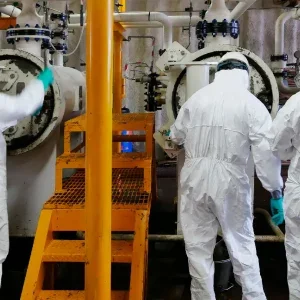Photovoltaic (PV) systems with lead-acid batteries are widely used in remote areas for telecommunications and for other stand-alone applications. However, in high latitude locations, the output of the PV array can be so small in winter that an all-the-year-round electricity load requires the use of seasonal PV energy storage or a hybrid PV-diesel system. The same is true for some lower latitude areas with a very long rainy season. Batteries are too expensive and impractical for seasonal energy storage in all but the smallest PV systems. Diesel generator back-up for remote PV-battery systems has the disadvantages of requiring refuelling and maintenance, and there is a lower limit to the size of reliable diesel engines. To overcome these problems, Neste has been studying and developing a closed-loop autonomous energy storage system based on hydrogen.
In this closed-loop hydrogen system, surplus PV electricity is used during summer to produce hydrogen gas from water in a pressurised electrolyser. The hydrogen is stored in a pressure vessel, and, during the winter, it can be used to produce electricity in a fuel cell. The water produced by the fuel cell is partly recirculated to the electrolyser, which closes the loop. Top-up water is obtained by purifying collected rain water.
This kind of PV-hydrogen system is most applicable to systems in high latitudes with continuous loads of 50 W – 300 W. Above about 300W, a hybrid PV-diesel system may become competitive.
Although the fuel cell and the electrolyser are modular, the gas and water handling system needed for the pressurised electrolyser is not scaleable to very small systems. Therefore, for remote high latitude sites with smaller all-the-year-round loads (less than about 50 W continuous), the best option looks to be a PV-battery system with just a back-up fuel cell and hydrogen gas storage. The hydrogen fuel must be replenished every 1-2 years.
Commercialisation of the seasonal storage system (with gas production) is anticipated for 2001-2002 and commercialisation of the fuel cell backup system for small PV applications is planned for 2000/2001. Field testing is currently underway in Finland.






